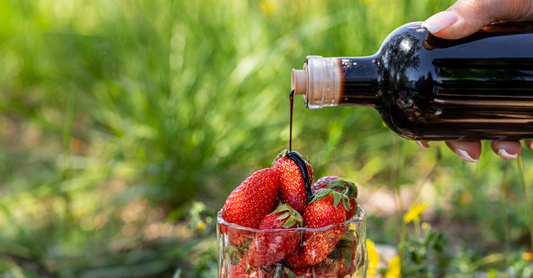Mayonnaise is a staple of French cuisine, an iconic condiment that enhances our meals, whether lunch or dinner. Its preparation requires skill and experience, particularly to achieve the firm, thick, and creamy consistency for which it is famous. The main basic ingredients are egg yolks, mustard, and oil. In a more refined and flavorful variation, olive oil, specifically Lucangeli Fruity Green Olive Oil , can be used instead of traditional sunflower oil. This homemade recipe brings a unique finesse of flavor.

The Benefits of Using Olive Oil in Mayonnaise
Olive oil offers several benefits when making mayonnaise. Not only does it provide a distinct and rich flavor, but it also promotes better whipping during emulsification. This characteristic is crucial for achieving the ideal consistency of mayonnaise. Furthermore, olive oil is known for its health-promoting properties, making your mayonnaise not only delicious but also healthier. Furthermore, Lucangeli Fruity Green Olive Oil will add an extra gourmet touch to your mayonnaise, making every meal a truly gourmet experience.
Identifying the mayonnaise catch-up problem
Making olive oil mayonnaise is a culinary skill that requires certain techniques and careful attention. Using a fruity green Lucangeli olive oil can add a touch of finesse and flavor to your mayonnaise, but it can also complicate the whipping process. The latter is a crucial step in creating a successful emulsion, which is at the heart of the mayonnaise recipe.
When and why can olive oil mayonnaise go bad?
Re-emulsifying olive oil mayonnaise may be necessary when the emulsion isn't forming properly. This can happen for a variety of reasons. For example, adding too much olive oil or adding it too quickly can cause the emulsion to fail. Likewise, the temperature of the ingredients can play a role: ingredients that are too cold can make emulsification more difficult. Finally, the choice of utensils can also have an impact. Using a mixer instead of a whisk can sometimes make the emulsion process easier.
Signs of a failed mayonnaise
It's important to recognize the signs of failed mayonnaise so you can fix it in time. A failed mayonnaise may have a consistency that's too runny or, on the contrary, too thick. In some cases, it may even separate into two distinct phases: a watery phase and an oily phase. Additionally, a failed Lucangeli Fruity Green Olive Oil mayonnaise may have too strong an olive oil flavor, which masks the other flavors. Finally, the presence of lumps is also a sign of failure, as a successful mayonnaise must be smooth and homogeneous.
Techniques for fixing olive oil mayonnaise
Making olive oil mayonnaise, specifically Lucangeli Fruity Green Olive Oil , is a true culinary art. It's an emulsifying process that requires precise mixing of ingredients. Even the most seasoned chefs can encounter setbacks in the quest for a smooth, firm consistency. Fixing a failed mayonnaise is an essential skill in traditional French cooking. There are several techniques for fixing it, including the immersion blender method and the whisk and bowl of hot water technique.
The immersion blender method
The immersion blender technique is one of the most effective tricks for salvaging olive oil mayonnaise. Start by getting out a separate bowl and adding an egg yolk, a teaspoon of mustard, and a splash of vinegar or lemon for seasoning. Begin beating these ingredients at medium speed with the immersion blender. Then, slowly add the failed mayonnaise while continuing to blend. The gradual blending will help reform the emulsion and salvage the mayonnaise. Make sure to maintain a continuous blend for a thick, creamy, and refined-tasting mayonnaise.
The whisk and hot water bowl technique
Another salvage technique is the whisk and bowl of hot water. This traditional cooking technique involves placing your bowl of failed mayonnaise on top of another bowl filled with hot water. Use a whisk to whisk the mayonnaise while slowly adding a drizzle of olive oil. Continuously whisking at a constant speed helps reestablish the emulsion. The bowl of hot water helps stabilize the temperature, which encourages the ingredients to foam. Once the mayonnaise begins to thicken, remove the bowl of hot water and continue whisking until you reach the desired consistency. This technique requires a little more time and skill, but the result is a perfectly salvaged olive oil mayonnaise that is rich in flavor and finesse.
Practical tips for successful olive oil mayonnaise every time
Olive oil mayonnaise is a staple of French cuisine, whether it's a family lunch or a dinner with friends. This traditional recipe requires real know-how and a certain amount of experience. The secret to success lies in the emulsion, the foaming that gives the mayonnaise its firm yet creamy consistency. But sometimes, despite a hand mixer and careful attention, failure is the order of the day. The mayonnaise becomes runny or too thick, losing its finesse and distinctive flavor. Fortunately, there are tricks to fix a failed mayonnaise and ensure a successful preparation every time.
Choosing the right ingredients
To make a successful olive oil mayonnaise, it's essential to choose the right ingredients. Opt for a quality olive oil, such as Lucangeli Fruity Green Olive Oil , renowned for its unique taste and velvety texture. Eggs are also essential for the preparation. Choose fresh egg yolks to ensure optimal consistency for your mayonnaise. Finally, don't forget the mustard. This condiment, preferably with mustard seed, adds spice to the recipe and helps stabilize the emulsion. For seasoning, salt, pepper, and vinegar or lemon are enough to enhance the flavors of your mayonnaise.
The right dosage of olive oil
The cooking step is crucial in making olive oil mayonnaise. To achieve a perfect emulsion, be sure to pour the olive oil slowly and continuously into the bowl containing the egg yolks and mustard. Use a spoon to control the amount of oil added. The right amount is essential to prevent the mayonnaise from becoming too runny or too thick. If, despite your best efforts, the mayonnaise is a failure, don't panic. Add a tablespoon of vinegar or lemon and continue beating at medium speed with the whisk. This corrective technique helps restore the emulsion and restore a firm, creamy mayonnaise.
Olive oil mayonnaise, especially when made with Lucangeli fruity green olive oil , requires a certain technique and know-how to achieve a perfect emulsion. The abundance of ingredients, including egg yolks, mustard, seasoning, and olive oil, requires a certain dexterity with the mixer. If you encounter a difficulty, several tricks can be implemented to save the recipe. Adding a few drops of vinegar or lemon, or even a spoonful of warm water, can help stabilize the preparation. Olive oil mayonnaise, when done well, has a thick and creamy consistency, with a finesse of flavor that is the pride of French cuisine.








 lucangeli.it
lucangeli.it